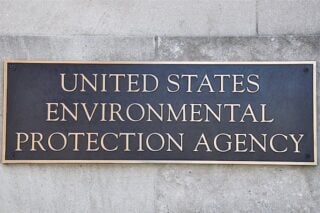Demolition of the Columbia Falls Aluminum Plant in Montana will take six months longer due to recent tests finding more asbestos than was originally expected. Cliff Boyd of Calbag Resources provided that news to the Columbia Falls City Council (CFAC) this month.
Calbag Resources bought the aluminum plant with intentions to demolish it, but most of the assets contain asbestos. The removal responsibilities belong to the CFAC and sampling has cost them almost $50,000.
What was supposed to last two and a half years will now take about three years of construction to complete. About 75 workers (half of them being local residents) have continued tearing down the plant. The plant contains carbon dust, which is highly flammable, and a special machine will be delivered to handle cutting this part of the building down.
Coincidentally, Montana has a long-standing history of asbestos. Its small town of Libby is arguably “Ground Zero” in the war on asbestos. The W.R. Grace asbestos mine operated there for over 30 years, resulting in nearly half the population being diagnosed with asbestos disease, including mesothelioma cancer.
Besides the mining industry, Montana is known for its problematic copper and aluminum production, oil refineries, and power plants because all involve the use of asbestos.
Regarding other construction plans for the Columbia Falls Aluminum Plant, the Montana Department of Environmental Quality (DEQ) is still reviewing a permit to get rid of the plant’s spent potliners. Used potliners are a hazardous waste and contain asbestos and heavy metals. A sealed decontamination area will be set up using negative air pressure to ensure no exposure.
Hazardous waste is defined by the Environmental Protection Agency as any material in liquid, solid, contained gas, or sludge form that contains elements that are dangerous to humans and/or the environment. Asbestos is one form of this waste that must be handled with specific precautions and by licensed professionals.
In this case, the hazardous waste will go into sealed containers and then be transported away on trucks to an approved landfill in Oregon. Even the trucks will get cleaned before leaving the decontamination area so no asbestos is left in the wheel wells.
The first plan sent to the DEQ for this particular aspect was originally 290 pages. With the additional 1,400 asbestos samples taken by Calbag, it’s turned into 800 pages in length.





